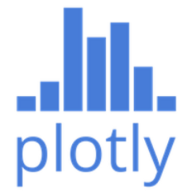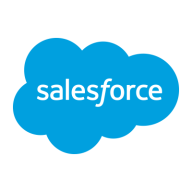

Tableau and Plotly compete in the data visualization category. Tableau generally has the upper hand due to its comprehensive feature set and robust analytics capabilities, while Plotly appeals to users needing customization and integration with coding environments.
Features: Tableau provides strong reporting and dashboard capabilities, seamless integration with various data sources, and sophisticated analytics for detailed visual storytelling. It is often praised for ease of use and a breadth of features. Plotly offers high customizability through coding, allowing bespoke visualization. It suits tech-savvy users aiming to build unique, interactive graphs and charts. Flexibility and handling complex data visualizations are notable attributes.
Ease of Deployment and Customer Service: Tableau offers straightforward deployment with strong support and documentation, easing initial setup and learning. In comparison, while Plotly provides robust support, it requires more technical expertise due to integration with Python and R, demanding more hands-on involvement.
Pricing and ROI: Tableau's pricing reflects its broad capabilities, having a potentially expensive licensing model. Yet, a strong ROI is often realized through advanced analytics impact. Plotly offers a more flexible pricing model, typically cost-effective for organizations focusing on customization and coding capabilities. Both products offer solid ROI potential, while Plotly's flexibility can yield more targeted outcomes for users with technical skills.


Plotly creates leading open source tools for composing, editing, and sharing interactive data visualization via the Web.
Our collaboration servers (available in cloud or on premises) allow data scientists to showcase their work, make graphs without coding, and collaborate with business analysts, designers, executives, and clients.
Tableau is a tool for data visualization and business intelligence that allows businesses to report insights through easy-to-use, customizable visualizations and dashboards. Tableau makes it exceedingly simple for its customers to organize, manage, visualize, and comprehend data. It enables users to dig deep into the data so that they can see patterns and gain meaningful insights.
Make data-driven decisions with confidence thanks to Tableau’s assistance in providing faster answers to queries, solving harder problems more easily, and offering new insights more frequently. Tableau integrates directly to hundreds of data sources, both in the cloud and on premises, making it simpler to begin research. People of various skill levels can quickly find actionable information using Tableau’s natural language queries, interactive dashboards, and drag-and-drop capabilities. By quickly creating strong calculations, adding trend lines to examine statistical summaries, or clustering data to identify relationships, users can ask more in-depth inquiries.
Tableau has many valuable key features:
Tableau stands out among its competitors for a number of reasons. Some of these include its fast data access, easy creation of visualizations, and its stability. PeerSpot users take note of the advantages of these features in their reviews:
Romil S., Deputy General Manager of IT at Nayara Energy, notes, "Its visualizations are good, and its features make the development process a little less time-consuming. It has an in-memory extract feature that allows us to extract data and keep it on the server, and then our users can use it quickly.
Ariful M., Consulting Practice Partner of Data, Analytics & AI at FH, writes, “Tableau is very flexible and easy to learn. It has drag-and-drop function analytics, and its design is very good.”
We monitor all Reporting reviews to prevent fraudulent reviews and keep review quality high. We do not post reviews by company employees or direct competitors. We validate each review for authenticity via cross-reference with LinkedIn, and personal follow-up with the reviewer when necessary.